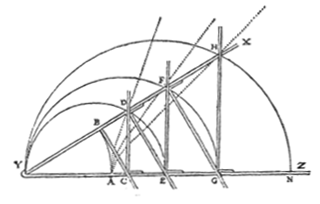- About MAA
- Membership
- MAA Publications
- Periodicals
- Blogs
- MAA Book Series
- MAA Press (an imprint of the AMS)
- MAA Notes
- MAA Reviews
- Mathematical Communication
- Information for Libraries
- Author Resources
- Advertise with MAA
- Meetings
- Competitions
- Programs
- Communities
- MAA Sections
- SIGMAA
- MAA Connect
- Students
- MAA Awards
- Awards Booklets
- Writing Awards
- Teaching Awards
- Service Awards
- Research Awards
- Lecture Awards
- Putnam Competition Individual and Team Winners
- D. E. Shaw Group AMC 8 Awards & Certificates
- Maryam Mirzakhani AMC 10 A Awards & Certificates
- Two Sigma AMC 10 B Awards & Certificates
- Jane Street AMC 12 A Awards & Certificates
- Akamai AMC 12 B Awards & Certificates
- High School Teachers
- News
You are here
Historical Activities for Calculus - Module 1: Curve Drawing Then and Now
Curve Drawing Then and Now
It was Rene Descartes (1596-1650) who dramatically changed the mathematical landscape with his book Discours de la méthode pour bien conduire sa raison et chercher la vérité dans les sciences (A Discourse on the Method of Rightly Conducting the Reason and Seeking Truth in the Sciences). In La Géométrie, one of three appendices of this book, Descartes showed how to describe geometric objects like curves by means of an algebraic equation. This enabled him to take advantage of the power of algebra to solve geometric problems. This idea of describing points in the plane with coordinates appears also in a work by Pierre de Fermat from 1637. In fact, while Descartes used this idea to derive algebraic equations of certain curves that he was interested in, it was Fermat who first used equations to define new curves. Later, Jacob Bernoulli (1654-1705) and Isaac Newton (1643-1727) generalized this concept to other kinds of coordinate systems such as polar.
The curves that Descartes was interested in were ones that could be described by some mechanical motion. The mechanism depicted in Figure 1 appears in La Géométrie as an example of such curves, traced out by points D, F, and H as the angle XYZ expands and contracts. Descartes showed how to derive the equations of these curves.
Figure 1. A curve-drawing device from Descartes' Géométrie
La Géométrie was a difficult work to read, as Descartes left much to the reader to work out for himself. He wrote
I hope that posterity will judge me kindly, not only as to the things which I have explained, but also to those which I have intentionally omitted so as to leave to others the pleasure of discovery.
The popularity of Descartes' La Géométrie was due largely to Frans van Schooten (1615-1660), a Dutch professor of mathematics who translated Descartes' work into Latin and wrote a commentary on it filling in many gaps. Van Schooten was particularly interested in conic section drawers and wrote a treatise on them. He devised several instruments for drawing conic curves, as shown in Figure 2. Like Descartes' instruments, these generally consisted of a collection of straight rods hinged together in some way.
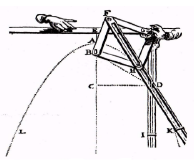 |
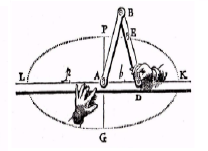 |
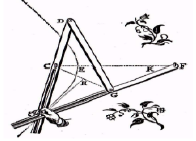 |
Figure 2. Above: Frans van Schooten's conic section drawers for (left to right) parabola, ellipse, and hyperbola. Directly below: Click on "Animate" to see van Schooten's Parabola Drawer in action; his Ellipse Drawer is further illustrated in Figures 6 and 8, below.
Today's graphing calculators easily generate graphs of curves by using an algebraic equation to generate the coordinates of many points on the curve and then plotting them. Many, many points must be plotted in order to obtain an accurate graph, so this would not have been a very practical method before the age of computers. In contrast, the ancients drew curves by constructing specialized instruments or "curvedrawers." In the same way that ruler and compass can be used to draw straight lines and circles in a continuous movement, the curve drawers devised by van Schooten and others were used to draw other curves of interest, particularly the conic sections, namely parabolas, ellipses, and hyperbolas.
In the exercises in this first module, several ellipse drawers from the history of mathematics are explored. These include the familiar string construction, as well as an ellipse drawer due to Proclus (411-485) and another one attributed to Archimedes (287-212 BCE).
Exercises
Descriptions of the Four Ellipse Drawers

Figure 3. String Construction of an Ellipse (click image to animate)
In the string construction in Figure 3, above, two ends of a string are attached to two fixed pins \(F\) and \(F^{\prime}.\) Then a pen holds the string taut as it rotates around the pins. The first person known to have written about the string construction of the ellipse was Anthemius of Tralles in the fifth century.
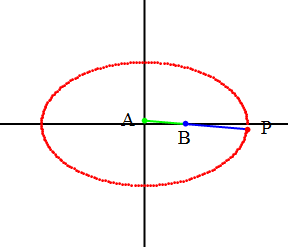
Figure 4. Archimedes' Trammel Construction of an Ellipse (click image to animate)
The next ellipse drawer, attributed to Archimedes, is the trammel construction. In Figure 4, above, the point \(B\) on segment \(AP\) is attached to the horizontal axis in such a way that it can slide along the axis. Similarly, the point \(A\) is attached to the vertical axis and allowed to slide along it.
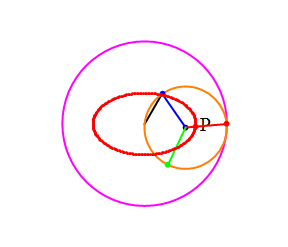
Figure 5. Proclus' Ellipse Drawer (click image to animate)
The next ellipse drawer, illustrated in Figure 5, above, would have been known to Proclus, who knew that an ellipse could be generated by tracing a point \(P\) inside a circle that rolls without slipping inside and tangent to another circle whose radius is twice as long. Such a construction brings to mind the popular spirograph game that children use to generate cycloidal curves.
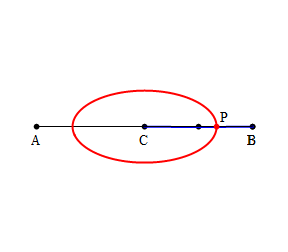
Figure 6. Van Schooten's Ellipse Drawer (click image to animate)
Our last ellipse drawer is due to the Dutch mathematician Frans van Schooten. Van Schooten was very interested in conic section drawers and wrote a treatise on them. He devised several instruments for drawing conic curves (see Figure 2, above), including the ellipse drawer shown in Figure 6, above. These conic section drawers were illustrated in the fourth book of his work Exercitationes mathematicae libri quinque (Five Books of Mathematical Exercises), published in 1657. Van Schooten had published the fourth book, Organica conicarum sectionum in plano descriptio, by itself in 1646.
Exercise 1.
Consider the string construction of an ellipse. Assume a coordinate system with \(F\) and \( F^{\prime}\) on the \(x\)-axis and the origin half way between \(F\) and \( F^{\prime}.\) Then the coordinates of \(F\) and \( F^{\prime}\) are \(({\pm}{c},0)\) for some \(c.\) If \(P=(x,y)\) is a point on the ellipse, then we must have \(|PF|+|PF^{\prime}|=d,\) where \(d\) is a constant (the length of the string in the string construction).
Figure 7. String Construction of Ellipse (applet for Exercise 1)
Use the distance formula to translate \(|PF|+|PF^{\prime}|=d\) into an algebraic equation involving \(x,\) \(y,\) \(c,\) and \(d.\) Solve for \(y\) to obtain two equations describing the top and bottom halves of an ellipse. Find the values of \(c\) and \(d\) such that the ellipse has \(x\)-intercepts at \(({\pm}{5},0)\) and \(y\)-intercepts at \((0,\pm3).\) Substitute these values into your equations and simplify. Use the sliders in the applet in Figure 7 above to set \(c\) and \(d\) and verify that the resulting ellipse has the correct intercepts. Enter your equations into the input field to obtain graphs and verify that you get the ellipse shown.
Exercise 2.
Figure 8. Van Schooten's Ellipse Drawer (applet for Exercise 2)
The applet in Figure 8 above shows the ellipse drawer devised by the Dutch mathematician Frans van Schooten. Click the small triangular Play button at the lower left hand corner to generate the curve. What should be the lengths of \(a=CD\) and \(b=DP\) so that the ellipse generated will have \(x\)-intercepts at \((\pm5,0)\) and \(y\)-intercepts at \((0,\pm3)?\) Use the sliders to set \(a\) and \(b\) to these values and verify that the resulting curve has the correct intercepts. Enter the equations that you found in Exercise 1 into the input field to verify that van Schooten's ellipse drawer does generate an ellipse.
Exercise 3.
Figure 9. Proclus' Ellipse Drawer (applet for Exercise 3)
The applet in Figure 9 above shows the ellipse drawer devised by Proclus. Click the Play button at the lower left hand corner to generate the ellipse. What should be the lengths of \(a=OA\) and \(b=PC\) so that the curve generated will have \(x\)-intercepts at \((\pm5,0)\) and \(y\)-intercepts at \((0,\pm3)?\) Use the sliders to set \(a\) and \(b\) to these values and verify that the resulting curve has the correct intercepts. Enter the equations that you found in Exercise 1 into the input field to verify that Proclus's ellipse drawer does generate an ellipse.
Exercise 4.
Figure 10. Archimedes' Ellipse Drawer (applet for Exercise 4)
The applet in Figure 10 above shows the ellipse drawer devised by Archimedes. Click the Play button at the lower left hand corner to generate the curve. What should be the lengths of \(a=BP\) and \(b=AB\) so that the curve generated will have \(x\)-intercepts at \((\pm5,0)\) and \(y\)-intercepts at \((0,\pm3). \) Use the sliders to set \(a\) and \(b\) to these values and verify that the resulting curve has the correct intercepts. Enter the equations that you found in Exercise 1 into the input field to verify that Archimedes' ellipse drawer does generate an ellipse.
References
Carl B. Boyer, Historical Stages in the Definition of Curves, National Mathematics Magazine, Vol. 19, No. 6 (March 1945), pp. 294-310.
Jan Van Maanen, Seventeenth Century Instruments for Drawing Conic Sections, The Mathematical Gazette, Vol. 76, No. 476 (July 1992), pp. 222-230.
Gabriela R. Sanchis (Elizabethtown College), "Historical Activities for Calculus - Module 1: Curve Drawing Then and Now," Convergence (June 2014)

